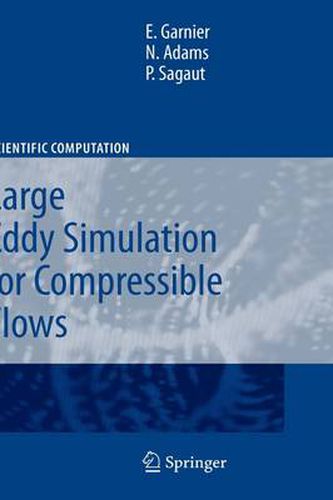Readings Newsletter
Become a Readings Member to make your shopping experience even easier.
Sign in or sign up for free!
You’re not far away from qualifying for FREE standard shipping within Australia
You’ve qualified for FREE standard shipping within Australia
The cart is loading…






This title is printed to order. This book may have been self-published. If so, we cannot guarantee the quality of the content. In the main most books will have gone through the editing process however some may not. We therefore suggest that you be aware of this before ordering this book. If in doubt check either the author or publisher’s details as we are unable to accept any returns unless they are faulty. Please contact us if you have any questions.
Turbulent ?ows are ubiquitous in most application ?elds, ranging from - gineering to earth sciences and even life sciences. Therefore, simulation of turbulent ?ows has become a key tool in both fundamental and applied - search. The complexity of Navier-Stokes turbulence, which is illustrated by the fact that the number of degrees of freedom of turbulence grows faster 11/4 thanO(Re ), where Re denotes the Reynolds number, renders the Direct Numerical Simulation (DNS) of turbulence inapplicable to most ?ows of - terest. To alleviate this problem, truncated solutions in both frequency and wavenumbermaybesought,whosecomputationalcostismuchlowerandmay ideally be arbitrarily adjusted. The most suitable approach to obtain such a low-cost three-dimensional unsteady simulation of a turbulent ?ow is Large- EddySimulation(LES),whichwaspioneeredtocomputemeteorological?ows in the late 1950s and the early 1960s. One of the main issues raised by LES is a closure problem: because of the non-linearity of the Navier-Stokes equations, the e?ect of unresolved scales must be taken into account to recover a reliable description of resolved scales of motion (Chap. 2). This need to close the governing equations of LES has certainly been the main area of investigation since the 1960s, and numerous closures,alsoreferredtoassubgridmodels,havebeenproposed. Mostexisting subgrid models have been built using simpli?ed viewsof turbulence dynamics, the main physical phenomenon taken into account being the direct kinetic - ergycascade from largeto small scales that is observed in isotropic turbulence and high-Reynolds fully developed turbulent ?ows. The most popular pa- digm for interscale energy transfer modeling is subgrid viscosity (Chap.
$9.00 standard shipping within Australia
FREE standard shipping within Australia for orders over $100.00
Express & International shipping calculated at checkout
This title is printed to order. This book may have been self-published. If so, we cannot guarantee the quality of the content. In the main most books will have gone through the editing process however some may not. We therefore suggest that you be aware of this before ordering this book. If in doubt check either the author or publisher’s details as we are unable to accept any returns unless they are faulty. Please contact us if you have any questions.
Turbulent ?ows are ubiquitous in most application ?elds, ranging from - gineering to earth sciences and even life sciences. Therefore, simulation of turbulent ?ows has become a key tool in both fundamental and applied - search. The complexity of Navier-Stokes turbulence, which is illustrated by the fact that the number of degrees of freedom of turbulence grows faster 11/4 thanO(Re ), where Re denotes the Reynolds number, renders the Direct Numerical Simulation (DNS) of turbulence inapplicable to most ?ows of - terest. To alleviate this problem, truncated solutions in both frequency and wavenumbermaybesought,whosecomputationalcostismuchlowerandmay ideally be arbitrarily adjusted. The most suitable approach to obtain such a low-cost three-dimensional unsteady simulation of a turbulent ?ow is Large- EddySimulation(LES),whichwaspioneeredtocomputemeteorological?ows in the late 1950s and the early 1960s. One of the main issues raised by LES is a closure problem: because of the non-linearity of the Navier-Stokes equations, the e?ect of unresolved scales must be taken into account to recover a reliable description of resolved scales of motion (Chap. 2). This need to close the governing equations of LES has certainly been the main area of investigation since the 1960s, and numerous closures,alsoreferredtoassubgridmodels,havebeenproposed. Mostexisting subgrid models have been built using simpli?ed viewsof turbulence dynamics, the main physical phenomenon taken into account being the direct kinetic - ergycascade from largeto small scales that is observed in isotropic turbulence and high-Reynolds fully developed turbulent ?ows. The most popular pa- digm for interscale energy transfer modeling is subgrid viscosity (Chap.